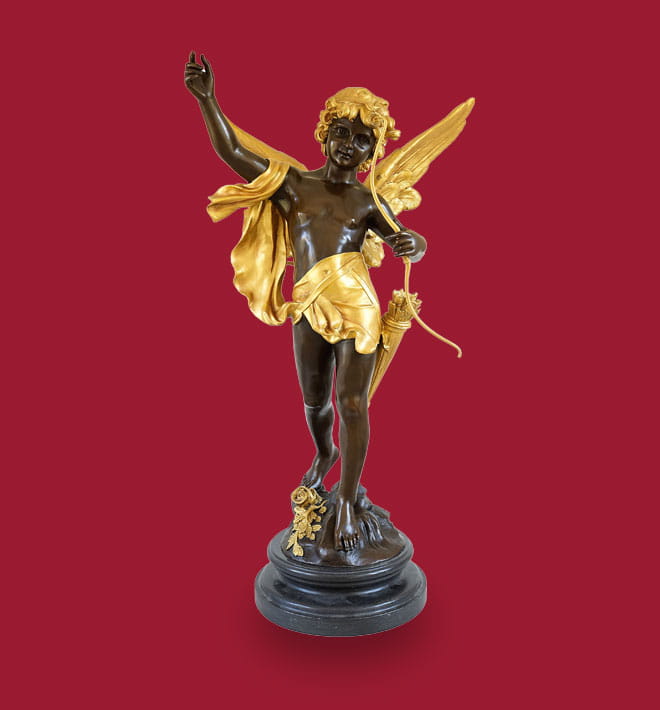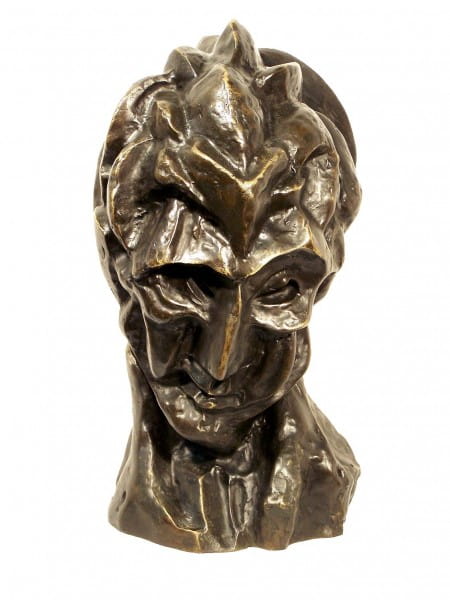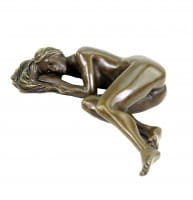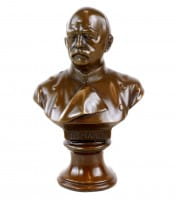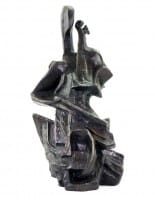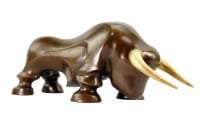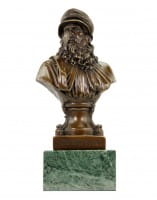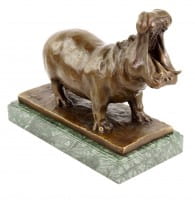Prices incl. VAT, free shipping worldwide
Free of shipping costs!
Ready to ship today,
Delivery time appr. 3-6 workdays










Product description
"Head of a Woman Picasso - Picasso Statue "
| Height | 40 cm |
| Width | 23 cm |
| Length | 20 cm |
| Weight | 5,6 kg |
Fernande by Picasso – A Modern Bronze Masterpiece of Revolutionary Form – Signed
This expressive bronze bust titled Tête de femme (Fernande) stands among the most iconic reinterpretations of early twentieth-century sculpture, capturing the threshold moment when Pablo Picasso first broke with traditional representation. The angular planes, fractured contours and asymmetrical rhythms of the face reveal the experimental impulse that defined the birth of modern sculpture. This piece, created originally in clay during the autumn of 1909 and cast in bronze from 1910 onward, immortalises Picasso’s partner Fernande Olivier, whose presence profoundly shaped his early breakthroughs. The striking volume and faceted forms display the essential characteristics that would later influence the development of Cubism, making this interpretation a powerful representation of Fernande by Picasso, a motif that remains central in understanding his sculptural evolution.
Origins of a Radical Transformation
The original model for this bronze emerged during Picasso’s intense creative period spent between Paris and Horta de Ebro, where he studied light, shadow and geometric simplification with renewed discipline. Created first in malleable clay, the sculpture marked a dramatic shift from classical realism to a bold structural language defined by triangular planes and dissected surfaces. In bronze, these elements become even more pronounced, revealing a tactile and expressive vitality that brings the fragmented features into striking unity. The result is one of the earliest sculptural works to anticipate Cubism and one of the most admired examples of Head of a Woman Picasso explorations. Today, bronze versions of this masterpiece can be admired in world-renowned museums such as the Museum of Modern Art in New York, the National Gallery of Art in Washington and the Musée Picasso in Paris.
The Muse Behind the Form
Fernande Olivier, Picasso’s companion from 1904 to 1912, served not only as a model but as an emotional anchor for the artist during his transition from the Blue and Rose periods toward something entirely unprecedented. Their life together in Montmartre shaped Picasso’s approach to form, pushing him toward deeper psychological complexity and structural abstraction. Fernande’s presence in numerous drawings, paintings and sculptures reflects her importance to his personal and artistic growth. The monumental strength and introspective tension embodied in this bronze highlight the intimate connection between artist and muse, making every line of the face a tribute to Fernande by Picasso, whose influence echoes throughout early modern sculpture. Through this interpretation, her image becomes more than a portrait; it becomes a symbol of transformation.
Picasso’s Life and Foundations of Genius
Pablo Picasso was born on 25 October 1881 in Málaga, Spain, into a family deeply rooted in artistic practice. His father, José Ruiz Blasco, was a painter and art teacher, and his mother, María Picasso López, encouraged his remarkable skill from the earliest age. Having received rigorous academic training in Barcelona and Madrid, Picasso quickly surpassed conventional expectations and sought new expressive languages that would reshape the future of creativity. His encounter with Paris in 1900 opened his vision to global artistic currents, ultimately leading him to push sculptural form beyond its traditional limitations. This historical framework enriches the meaning of every Picasso Statue, turning each surviving bronze into a testament of his relentless reinvention.
A Sculptural Language of Faceted Emotion
Seen from the front, the sculpture reveals a deliberate tension between solidity and fragmentation, with sharply defined ridges forming the forehead, eyes and nose. The dramatic planes carve out a rhythmic pattern that forces the viewer to move around the work, seeing new relationships between light and shadow with every angle. The mouth appears both serene and enigmatic, suggesting an inner life that is simultaneously obscured and revealed. This dynamic complexity is characteristic of Head of a Woman Picasso, where the face becomes a landscape of shifting forms rather than a single static expression. The bronzed surface enhances these variations, allowing the intricate modelling to convey psychological depth through its changing reflections.
Enduring Legacy and Global Presence
Sculptures derived from the original Tête de femme (Fernande) remain treasured highlights in numerous public and private collections, continuing to attract scholars, collectors and enthusiasts. Museums across Europe and the United States display versions of this work, recognising its central position in the development of modern sculpture. Its presence in such institutions ensures that both Fernande’s visage and Picasso’s breakthrough remain accessible to future generations. Each surviving bronze stands as a historical record of a pivotal moment in Picasso’s evolution, and the pulse of an artist redefining the meaning of form. In this way, the sculpture remains one of the most compelling symbols of personal inspiration and transformational vision.
A Timeless Reflection of Innovation
This bronze bust brings together the emotional force of Fernande’s likeness and the sculptural revolution Picasso initiated in the early twentieth century. Its faceted construction, expressive modelling and profound historical context make it one of the most recognisable interpretations associated with Fernande by Picasso and Head of a Woman Picasso. Through its commanding presence, it represents the fusion of personal connection and radical experimentation that defines Picasso’s early years in Paris. The continued display of such works around the world ensures that their significance remains undiminished. It stands today as a lasting tribute to a unique chapter in Picasso’s life and the enduring bond between creator and muse.
Our advantages
free shipping
Worldwide free shipping
14 days money back
You can cancel your order
within 14 days
secure payment services
Paypal, Master Card, Visa, American Express and more

